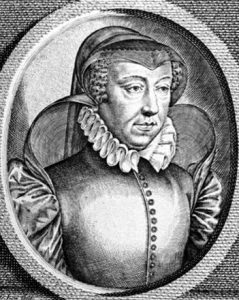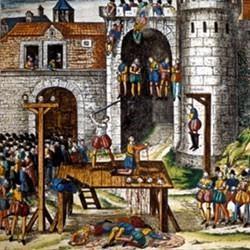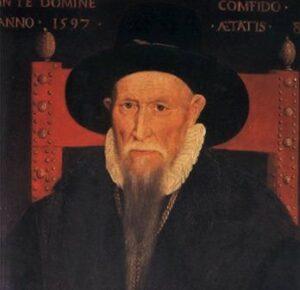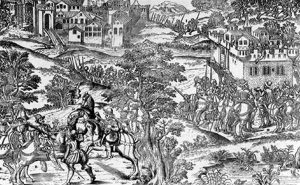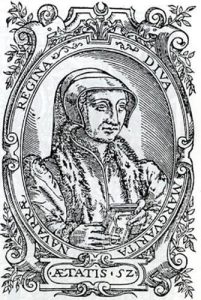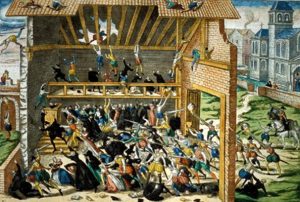Attempt at reconciliation
By 1561, Catherine de Medici, Henri II’s widow, had been regent for two years. Charles IX had reigned since the death of his older brother Francis II. Catherine de Medici wanted to avoid a direct religious confrontation between Catholics and Protestants in a political context that was very tense. She realised that the power of the monarchy was threatened by the general unrest as well as by the increasing power of the Guise family after the failure of the Amboise conspiracy.
To help the two religious parties come to a better understanding of each other, the regent summoned an assembly of Catholic and Protestant theologians in Poissy, in the presence of the king and the royal family.
The problem of communion brought discussions to a standstill
The Catholics were represented by 40 prelates, including the cardinal of Lorraine and the cardinal of Tournon. There were 12 Protestant delegates, led by Théodore de Bèze.
The chancellor Michel de l’Hospital explained the king’s wishes : order and unity had to be re-established without violence ; peace was more important for the kingdom than dogma .But the theologians did not understand his message.
Théodore de Bèze insisted on the fact that Christ was not actually present in the bread and wine at communion – he said that the body of Christ « is as far away from the bread and wine as the highest heavens are from the earth » (est éloigné du pain et du vin autant que le plus haut ciel est éloigné de la terre).
An agreement could not be reached.
However, in the Edict of January 1562, Catherine de Medici – advised by Michel de l’Hospital – officially recognized the right of Protestants to gather together and hold services in the outskirts of the towns and in the countryside.
The situation became explosive
In fact, the wars of religion broke out the following year, because the Catholic faction did not accept the Edict of January 1562.
Indirectly, the colloquium had two other consequences :
- the council of Trent resumed in January 1562 ;
- the Jesuits, who had first come to France in order to attend the colloquium, were allowed to stay.

